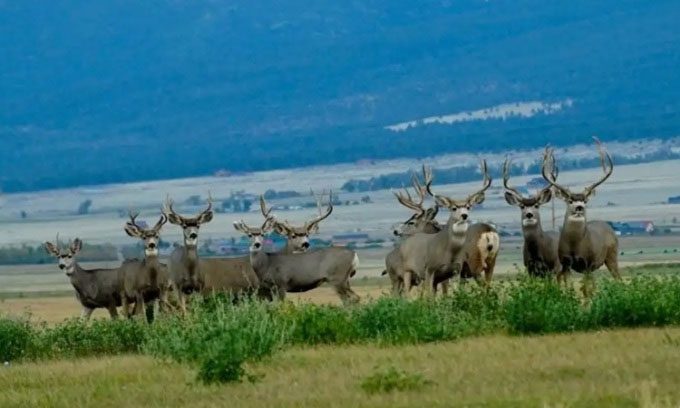The flora on Santa Catalina Island, part of the Channel Islands off the southern coast of California, is being ravaged by deer, leading conservation organizations to decide to cull them.
As a rugged mountain jutting out into the sea, Santa Catalina Island is home to over 60 species of plants and animals that cannot be found anywhere else on Earth. However, this habitat is suffering from the native flora being destroyed by deer, an animal introduced to the island over the past century for purposes of ranching, hunting, and filming, Yahoo reported on December 3. For Lauren Dennhardt, the island’s lead conservationist, the only way to save Santa Catalina for future generations is to exterminate all the deer.

Mule deer on Santa Catalina Island. (Photo: Flickr).
Five of the eight islands in the Channel Islands have national parks, but Santa Catalina, the island closest to Los Angeles, is different. For over 100 years, the island has been a popular destination for tourism and hunting. Eighteen mule deer were transported from the forests of California to the island nearly a century ago. Currently, 2,000 deer are devastating the native plant species here, causing soil erosion, depleting food sources for many other animals, and fostering the proliferation of fire-prone vegetation, according to Dennhardt. Non-native plants can create conditions that contributed to the recent wildfire disaster on Maui in Hawaii.
The Santa Catalina Island Conservancy, a nonprofit organization that owns 88% of the 194 square kilometer island, concluded that the only way to save the native flora and restore the island is to eliminate the deer. Initially, they considered relocating them. However, accessing deer hiding in the canyons is nearly impossible, and they often die from stress when captured. There are similar challenges with a sterilization approach, which is projected to take about 15 years to remove the deer from the island.
The conservation organization decided that shooting the deer from helicopters over a 7-week period next summer is the best solution. Although this measure may seem extreme, such predictions are relatively common in conservation and have been carried out on all the other islands in the Channel Islands. The conservancy needs a permit from the California Department of Fish and Wildlife, which is currently evaluating the plan. However, the local community has expressed anger over the plan to cull the deer from above. More than 3,000 residents of Avalon, the community at the edge of the conservancy’s land, have staged multiple protests and signed petitions.
Pastor Lopez, a local resident, believes the conservancy should focus on properly managing the fire-prone vegetation instead of blaming the widespread deer population. However, the conservancy argues that this is not a sustainable long-term solution.
Previously, the conservancy had killed approximately 8,000 goats and 12,000 pigs that were damaging trees and causing soil erosion. They had attempted to manage the deer through a hunting program with a quota of 200 deer per year, but this was ineffective. The mule deer have no natural predators on the island, allowing them to grow unchecked.


















































